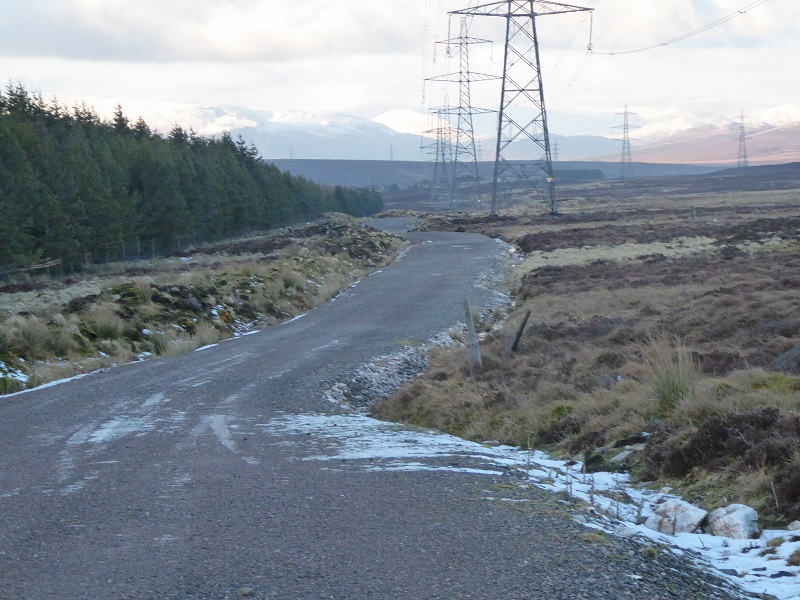
Following my post about the failure to restore the destruction caused by the Beauly Denny by the developer, Scottish and Southern Electric, I went last Monday to have a look at the section of the “temporary” construction track on the Drumochter Estate.
Under the Beauly Denny planning application determined by the Scottish Government, all construction tracks were to be fully restored. The Drumochter Estate however submitted an application in 2013 to the Cairngorms National Park Authority to retain the section of track on their estate. The first application was refused, mainly because the estate wanted to keep the entire section of track which ran through the estate. The section south of North Drumochter Lodge ran into the Drumochter Special Area of Conservation – why is it that only European designated sites appear to have any teeth? – and cut across the open hillside. The revised application removed the southern section of track but is still 4.7 km in length.
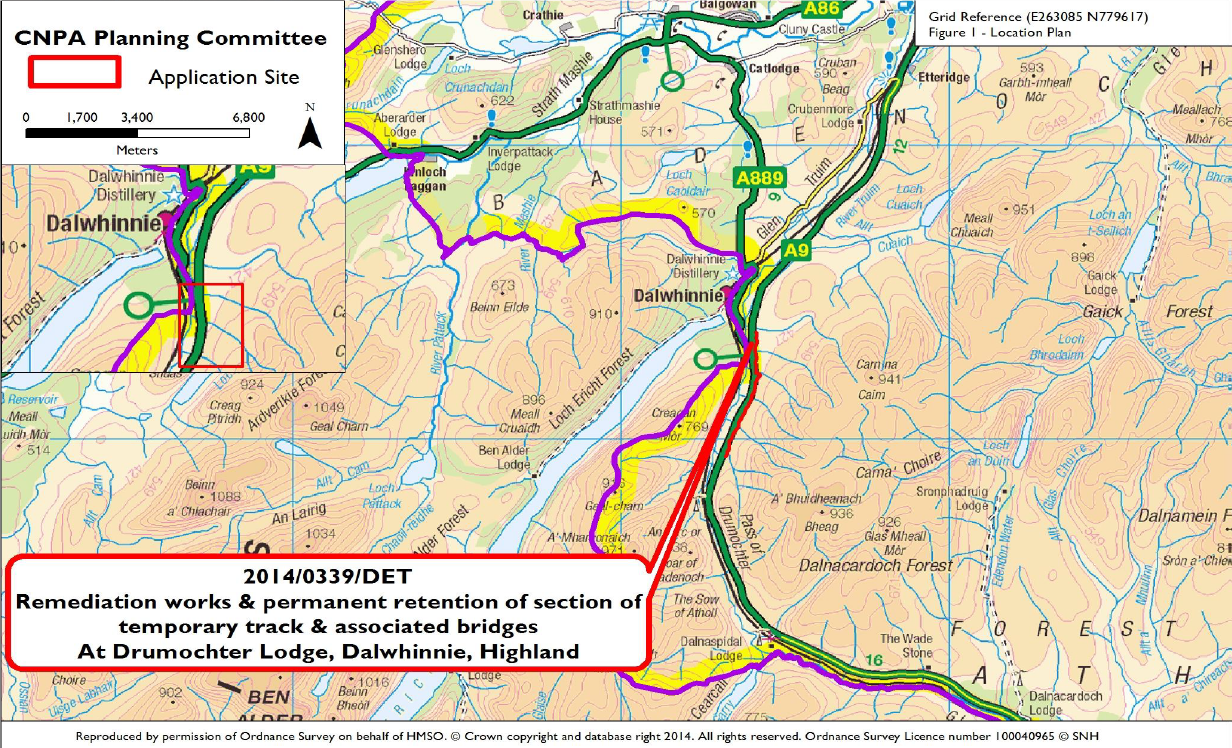
The Committee Report which considered the application in February 2015 track planning application was very thorough. The CNPA had opposed the Beauly Denny, was concerned about the proposed track, but was won over by arguments that with the new A9 dualling would make it very difficult for estate vehicles to access the existing hill tracks onto the east side of Drumochter. Their assessment of the construction track was pretty damning:
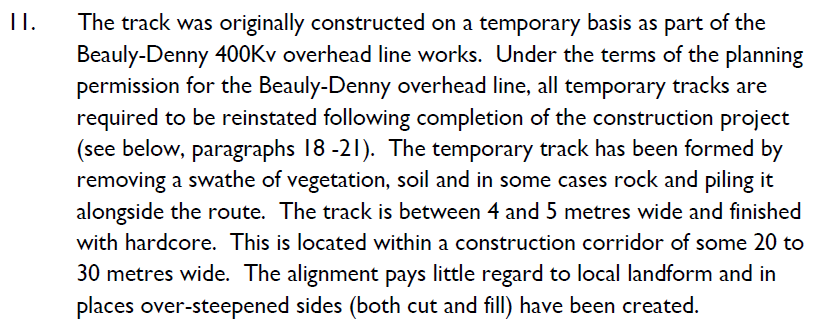
However, the assessment of staff was that as long as the construction track was narrowed considerably – to a maximum of 3m – and the spoil heaps used to do this, retention of the track was acceptable:

The North East Mountain Trust, which to its credit had objected to the application for the existing track was also persuaded and agreed not to object. Both the NEMT and the CNPA were no doubt partially persuaded by the illustrations from the estate of what they were proposing:
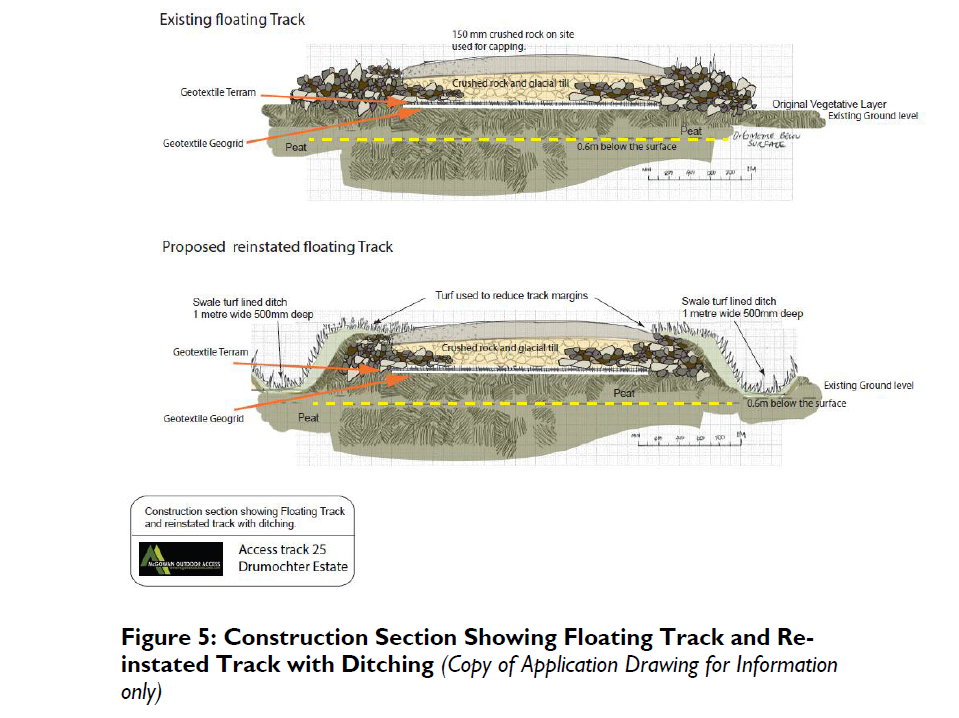
The problem is that two years later absolutely none of what was promised by the estate has happened.
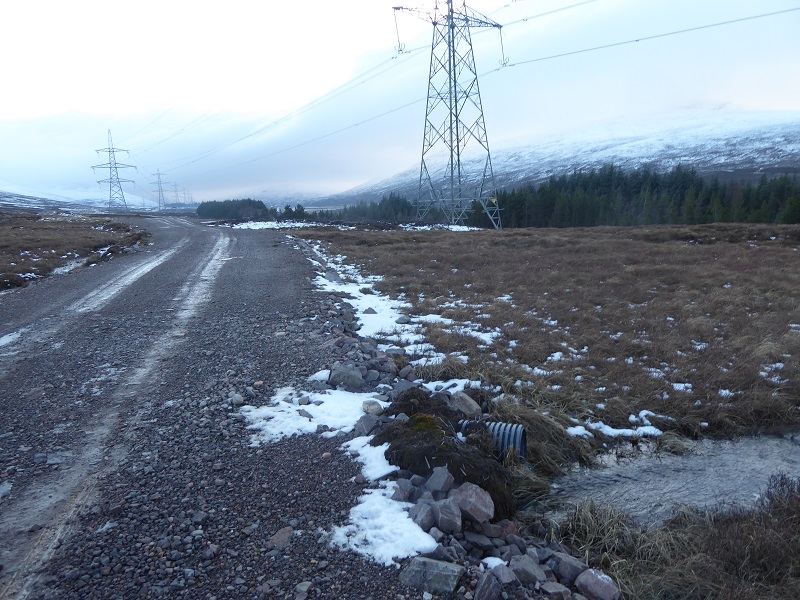
Some of the track is “floating” which means it was created by dumping aggregrate onto the peat in sufficient quantities to support construction vehicles. Proper restoration would mean all this aggregate being removed. The estate promised to improve this by narrowing the track to 3m maximim and revegetating the sides using vegetation from a new drainage ditch and seeding.
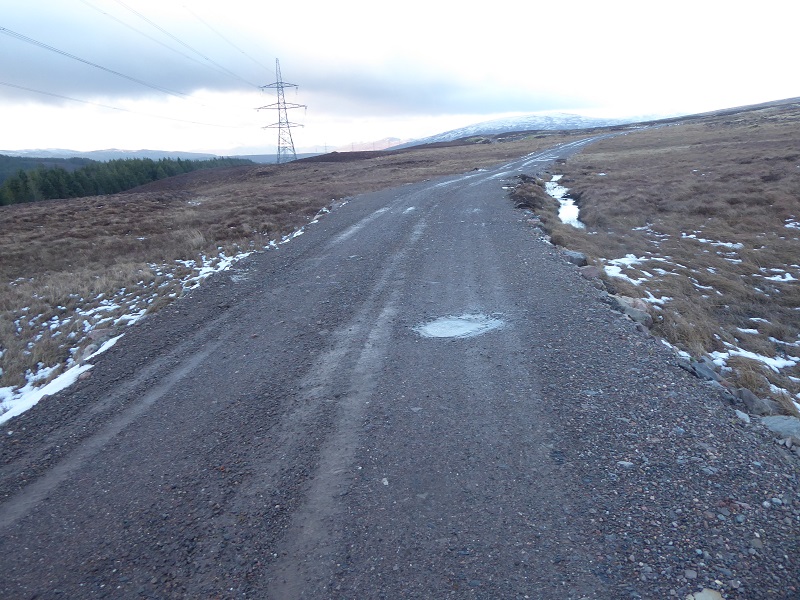
The track is almost two landrover widths and should have been almost halved in breadth according to the planning conditions.
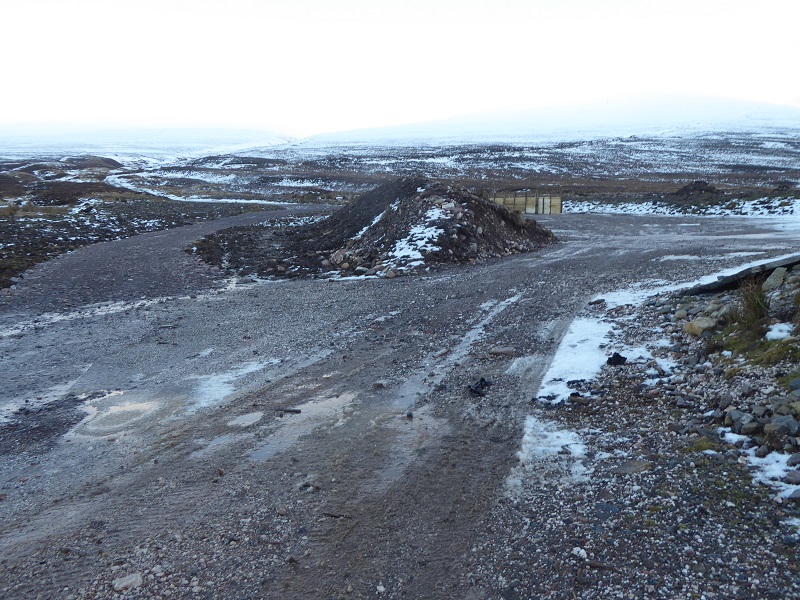 Part of the restoration proposed by the estate was removal of this “hammerhead. Nothing has been done. There are piles of spoil in the centre and along right side of the area.
Part of the restoration proposed by the estate was removal of this “hammerhead. Nothing has been done. There are piles of spoil in the centre and along right side of the area.
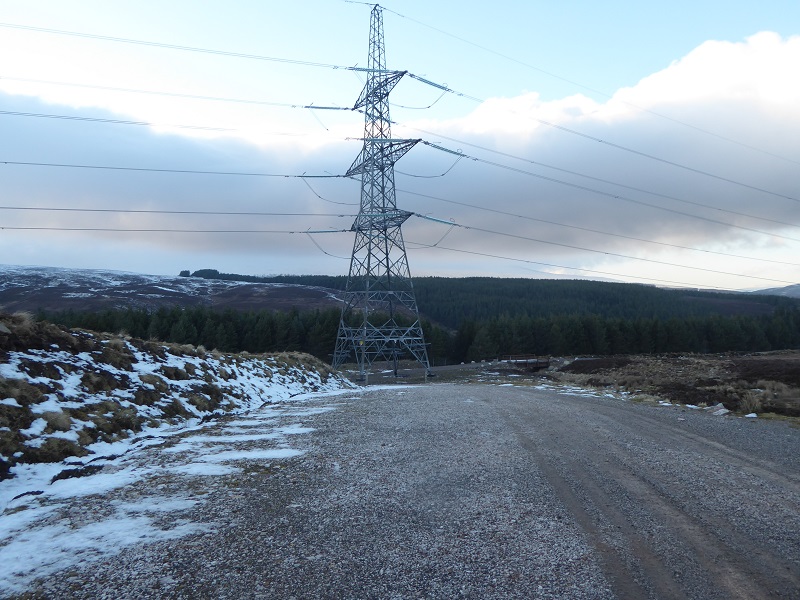 Another view of one side of the hammerhead. All this ground should have been restored.
Another view of one side of the hammerhead. All this ground should have been restored.
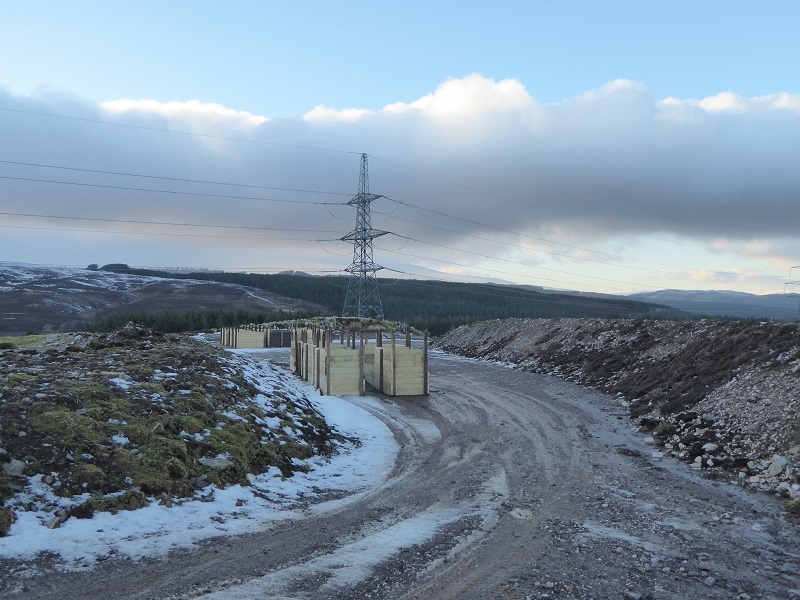
The priority of the estate is indicated by these new grouse butts. They were being brought in from the A9 by landrover and trailer. It appears it has suited the estate to retain a large storage area rather than restore the land as promised.
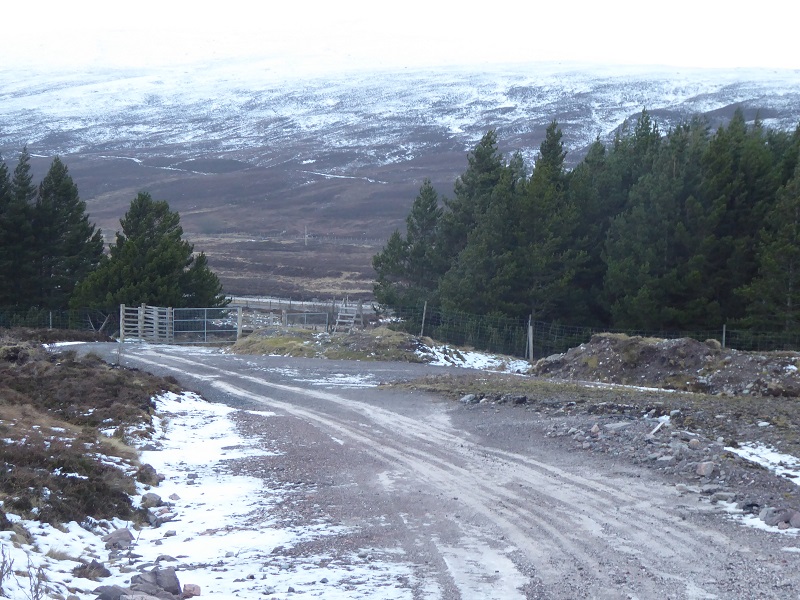
The CNPA, again to give it credit, had required that all the works be completed by June 2016:

Six months after the deadline for works to be completed, on the section I looked at at the north end of the proposed track, there is no evidence that any work has been completed. There are two issues here:
- first you cannot tell from the planning portal whether the CNPA has agreed in writing with the estate to extend the deadline for completion of the works beyond June 2016 and, if so, the justification for this and what the new deadline is;
- second, if the CNPA has not agreed an extension, its not clear what enforcement action they have taken if any.
Unfortunately, this is yet another planning case where the credibility of our National Parks is at stake. What appears to be happening in a number of cases from Natural Retreats at Cairngorm to the Bruar Hydro to Drumochter is that the CNPA approved planning applications with conditions which the developer then simply ignores. The failure of the CNPA to go public about this and use its enforcement powers gives a clear message to developers that as long as they pay someone to complete good looking paperwork, they can do what they want.
In the Drumochter access track case there is an added complication. SSE were supposed to restore this track and, being a huge company, obviously have the resources to do this properly (if there was anyone insisting they should do so). Having agreed that Drumochter Estate could keep the track, however, the risk is that all obligations of SSE will have been taken over by the estate. My guess is that will now make it impossible for the CNPA to turn round to the estate and say the planning permission no longer applies and ask SSE to do the works.
This supposition is reinforced by the fact that SSE has not been at all co-operative about restoration of the Drumochter and the atrocious standards of the restoration work they have undertaken.

The trouble is that the CNPA has allowed them to get away with this. Although very concerned about the standard of work, and taking time to visit the site, they have then resorted to their normal practice of writing letters rather than taking enforcement action when things go wrong:
20. The Convenor advised the Committee on her reflections following site visit with Scottish & Southern Energy (SSE) to the Beauly – Denny overhead transmission line that she and other members had attended, along with SNH staff. She advised that it seemed that SSE Officers were not sufficiently clear as to what the restoration of the tracks involved. SSE Officers were also rather vague as to who was ultimately responsible for carrying out the restoration and reinstatement and what standard would be deemed acceptable. Following a full discussion the Committee agreed that Convenor of the Board should write to SSE expressing significant concerns. (Planning Minute June 2015)
The failure of the CNPA to take a robust line against either SSE or the North Drumochter estate means that the CNPA is storing up serious problems for itself at Drumochter and setting further poor precedents for the rest of the National Park.
